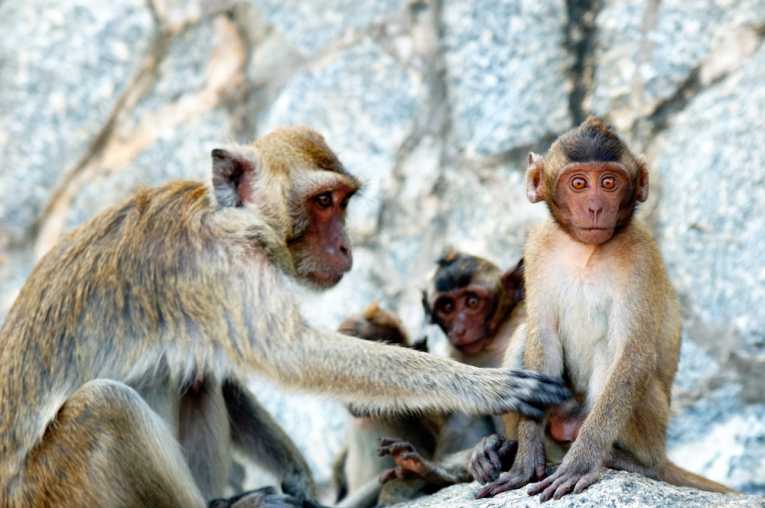Long tailed macaque monkeys (often called the crab-eating macaque in south-east Asia) live well on the island of Mauritius, and are considered non-native. Portuguese sailors took them there about 400 years ago, and they find the forests just as homely as their native jungles. They are also found as far afield as Hong Kong, Palau and the medical labs. of the developed world.
The problem uncovered by BUAV is the distress these animals suffer in transit, when captured and also their fate (as wild monkeys). The British Union Against Vivisection has been active for a commendable 100 years and more, raising our awareness on issues that should horrify us all. Around 10,000 monkeys a year are exported from Mauritius for prices up to £2600 each. Interestingly, the population has been assessed by some at 35,000. That is presumed to be an estimate. They are trapped in large cages baited with sugar cane and bananas near to their forest home. Usually they are then transported by Air France mainly to the USA or most European countries, often to "monkey farms" which need to increase breeding stock according to the BUAV. Covance are allegedly one of the main importers in the US, based in New Jersey, but with labs in 60 countries; Charles River Labs., based in Wilmington, MA are also alleged to import a similar number of Mauritian macaques while Nafovanny farm, in Vietnam, is said to have 30,000 macaques, which it exports mainly to the US and Europe.
The use of long tailed macaques in laboratories after being bred in the farms is connected with toxicology, disease and neuroscience. Vivisection is nowadays replaced with alternative procedures. We need to hear more from labs. than from tourists, if this trade is to be altered to a more benign transition from the wild to captivity. Many infections are shared with humans and an alarm rang when the Ebola-Reston virus was found in a Philippine importation of this species to the US. The panic subsided when the dangerous African strain was not present.

Monkey behind bars via Shutterstock
The present campaign begun by BUAV is directed at tourists to Mauritius with the appeal that the sociable animals are torn from their families and enclosed in crowded and un-aerated conditions, in the cargo area of passenger aircraft. They are also culled by the Mauritians to keep down their numbers, according to researchers. We meet such monkeys whenever we travel to Eurasian tropics and most tourists probably understand the human-like family structure and possibly their pesky nature if they become used to human habits. Dispensing with any rarity problem, our ethics are being challenged here. Do we check the overall numbers and belabour the French authorities for their cruel treatment of individual families. Do we accept that an alien species cannot be allowed to dominate island niches and that controls once introduced need to be ruthlessly applied in some cases.

BUAV Chief Executive, Michelle Thew
The problem with tourists is that islanders know what habitats can tolerate. Whether they assess this correctly is down to scientific study and not the emotions of strangers on a brief visit. BUAV Chief Executive, Michelle Thew (above) correctly asserts that island visitors will be shocked...

... and that Dr. Navin Ramgoolam (above), the current Prime Minister of Mauritius should be informed of the concerns.
Perhaps these two can present the case to us more successfully and save this tale of a monkey from this unhappy ending. Fewer tourists for Mauritius or too many monkeys on a small island.










